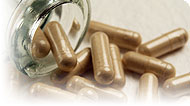Beta-Sitosterol

How to Use It
Between 500 mg and 10 grams of beta-sitosterol per day have been used in clinical research to reduce elevated blood cholesterol levels. Between 60 (20 mg three times per day) and 130 mg per day have been used in trials reporting a reduction in prostatic hyperplasia-related symptoms.4, 5
Where to Find It
Beta-sitosterol is one of a few plant sterols (cholesterol is the main animal sterol) found in almost all plants. High levels are found in rice bran, wheat germ, corn oil, and soybeans. Peanuts and its products, such as peanut oil, peanut butter, and peanut flour, are good sources of plant sterols, particularly beta-sitosterol.6
Possible Deficiencies
Because beta-sitosterol is not an essential nutrient, deficiencies do not occur.
Copyright © 2024 TraceGains, Inc. All rights reserved.
Learn more about TraceGains, the company.
The information presented by TraceGains is for informational purposes only. It is based on scientific studies (human, animal, or in vitro), clinical experience, or traditional usage as cited in each article. The results reported may not necessarily occur in all individuals. Self-treatment is not recommended for life-threatening conditions that require medical treatment under a doctor's care. For many of the conditions discussed, treatment with prescription or over the counter medication is also available. Consult your doctor, practitioner, and/or pharmacist for any health problem and before using any supplements or before making any changes in prescribed medications. Information expires December 2024.



 We are proud to announce that
We are proud to announce that  As the market evolves, customers increasingly request a wider variety of omega-3 options for their lipid...
As the market evolves, customers increasingly request a wider variety of omega-3 options for their lipid...  Maintaining healthy glucose levels is crucial for preventing metabolic conditions like diabetes,...
Maintaining healthy glucose levels is crucial for preventing metabolic conditions like diabetes,...  Looking at formulating a new vitamin blend? Discover
Looking at formulating a new vitamin blend? Discover 







































